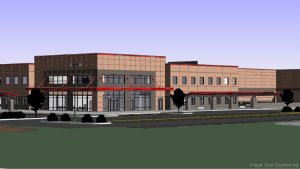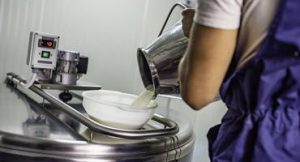
Review addresses nutritional, environmental and management approaches to mitigate failure of colostrum production.
Colostrum, the first milk produced by dairy cows around calving, is essential for the health and survival of newborn calves. Ensuring adequate colostrum production, therefore, is a major focus for dairy producers and researchers alike, according to a news release from the American Registry of Professional Animal Scientists (ARPAS).
The dairy industry has known for decades that colostrum helps young calves develop a strong immune system and thrive. Dr. Peter Erickson of the University of New Hampshire Department of Agriculture, Nutrition & Food Systems in Durham, N.H., explained that “although the importance of feeding colostrum to calves is well established, colostrum production has not been reviewed extensively and has become a challenge for some farms, with some recent research citing that 73% of cows at their first calving and 61% of multiparous cows do not produce enough colostrum to feed their calves.”
A new invited review published in Applied Animal Science points out that several factors may be contributing to the lack of colostrum production, including adequate energy in the diet of the pre-fresh cow, longer dry period length, environmental temperature and potentially hormonal disturbances, all of which “appear to play a major role in the production of colostrum.”
The review sheds light on the complex factors influencing colostrum production in dairy cows – involving nutrition, environment, genetics and management practices – and outlines steps producers can take to boost colostrum production and the health of their newborn calves.
Much recent research has focused on improving colostrum quality, but Erickson and his co-authors set out to piece together the scientific community’s current understanding of the factors that influence colostrum yield itself to better understand how to treat cows that produce low amounts – or no – colostrum around the time of calving. The results of their review point to several factors in the life of a dairy cow that influence their colostrum production.
Energy intake in the weeks leading up to calving is crucial for optimal colostrum production.
“Studies show that feeding a pre-fresh diet containing more sugar tended to increase colostrum yield, and feeding diets that meet the pre-fresh nutrient requirements for dairy cows is essential,” noted Erickson, lead author on the article. The review also points to supplementation of rumen-protected choline, which has been shown to increase colostrum production.
Environmental conditions, such as the length of the dry period and temperature, also affect colostrum yield, with research pointing to a longer dry period length as likely to boost colostrum yield, depending on the time of year. A longer dry period spent at low temperatures – versus moderate to high temperatures – will slightly dampen colostrum production. Low environmental temperatures can also affect a cow’s natural hormonal profiles, which play a vital role in regulating colostrum production, the ARPAS release said.
Recent research indicates that genetics could likely play a role as well, with data indicating Jersey cows in particular may have a genetic predisposition to low colostrum production.
Last, proper management at dry-off is essential as cows calving with mastitis will produce less colostrum due to synthetic tissue damage, ARPAS said in the news release.
Dairy producers can apply the findings of this review to help alleviate challenges with reduced or no colostrum production by focusing on the identified factors such as dry period length, nutrition, environment and genetics, according to the review’s conclusions.
“This invited review article, resulting from a presentation in a recent symposium of the American Registry of Animal Scientists, provides insight and understanding about factors affecting yield of colostrum,” according to Dr. David K. Beede, editor in chief of Applied Animal Science. “Nutritional, environmental and management strategies to mitigate failure of colostrum production are discussed. Perspectives and theories about why adequate colostrum production sometimes fails are addressed for consideration in future research and applications.”
“This review highlights the importance of understanding the intricate factors that influence colostrum production, and where the research should go next,” Erickson added. “By identifying key nutritional and management strategies, we can work toward mitigating the challenges associated with poor colostrum yield and ensure the health and well-being of dairy calves in the future.”
The article, “Invited Review: Factors influencing colostrum production of multiparous Holstein and Jersey cows,” by P.S. Erickson, T.C. Stahl and S.C. Allen appears in the December issue of Applied Animal Science (https://doi.org/10.15232/aas.2024-02621).
ARPAS provides certification of animal scientists through examination, continuing education and commitment to a code of ethics. Continual improvement of its individual members is catalyzed through publications – including the Applied Animal Science journal – and by providing information on educational opportunities. ARPAS is affiliated with five professional societies: American Dairy Science Association, American Meat Science Association, American Society of Animal Science, Equine Science Society and Poultry Science Association.
You can now read the most important #news on #eDairyNews #Whatsapp channels!!!
🇺🇸 eDairy News INGLÊS: https://whatsapp.com/channel/0029VaKsjzGDTkJyIN6hcP1K




















